Cabbage varieties with their different colours, textures, and sizes are all popular and oh so versatile whether you use them in slaws, stir-fries or soup. Join us as we explore 10 different cabbage types in this post!

Whether you're a seasoned cabbage enthusiast or a curious beginner, get ready to unlock the secrets of this incredible vegetable!

Most Common Cabbage Varieties
1. Green Cabbage
One of the most commonly recognised varieties that can be easily found in supermarkets. Also known as White Cabbage or Cannonball Cabbage.

Appearance:
Flavour:
Selecting:
Nutrition:
Culinary Uses:
It has a round shape with tightly packed leaves.
It boasts a crisp texture and a slightly peppery taste.
Look for dense, heavy heads with crisp, vibrant green leaves. Avoid wilted or yellowing outer leaves.
It is an excellent source of fibre, vitamins C and K, and other essential nutrients.
In traditional recipes such as corned beef and cabbage, potato colcannon, coleslaws, salads, stir-fries, for roasting, in soups, stews and casseroles and fermented cabbage dishes like sauerkraut.
Try it in these salads...
2. Jaroma Cabbage
Have you ever stumbled upon a cabbage that seems like it's been flattened by someone? Well, then it is more than likely a Jaroma cabbage.

Appearance:
Flavour:
Selecting:
Nutrition:
Culinary Uses:
It looks like a regular green cabbage that has been squashed to make it flatter
It a mild and slightly sweet flavour.
Opt for compact, sweet-tasting heads with vibrant green leaves and no wilting.
Just like green cabbage, vitamins C and K and an excellent source of fibre.
It can be used as you would a green cabbage.
Try it in these salads instead of white cabbage...
3. Savoy Cabbage
Curly, elegant savoy was named after the Savoy region in France and is also known as Milan Cabbage or Lombard Cabbage after Milan and the Lombardy region in Italy.

Appearance:
Selecting:
Flavour:
Nutrition:
Culinary Uses:
It is easily distinguishable by its crinkled, dark green leaves that turn to light yellow as they get closer to its centre.
Select crisp, firm heads with crinkled leaves and a fresh green colour.
It is known for its delicate and tender texture, as well as its mild, sweet flavour.
It is rich in vitamins A and C; Savoy cabbage offers a healthy boost to any meal.
The leaves are often used in soups, stews, and casseroles, as they readily absorb flavours during cooking. It also works well as a low-carb wrap, stuffed cabbage rolls, stir-fries, and raw in salads.
Try it in these salads...
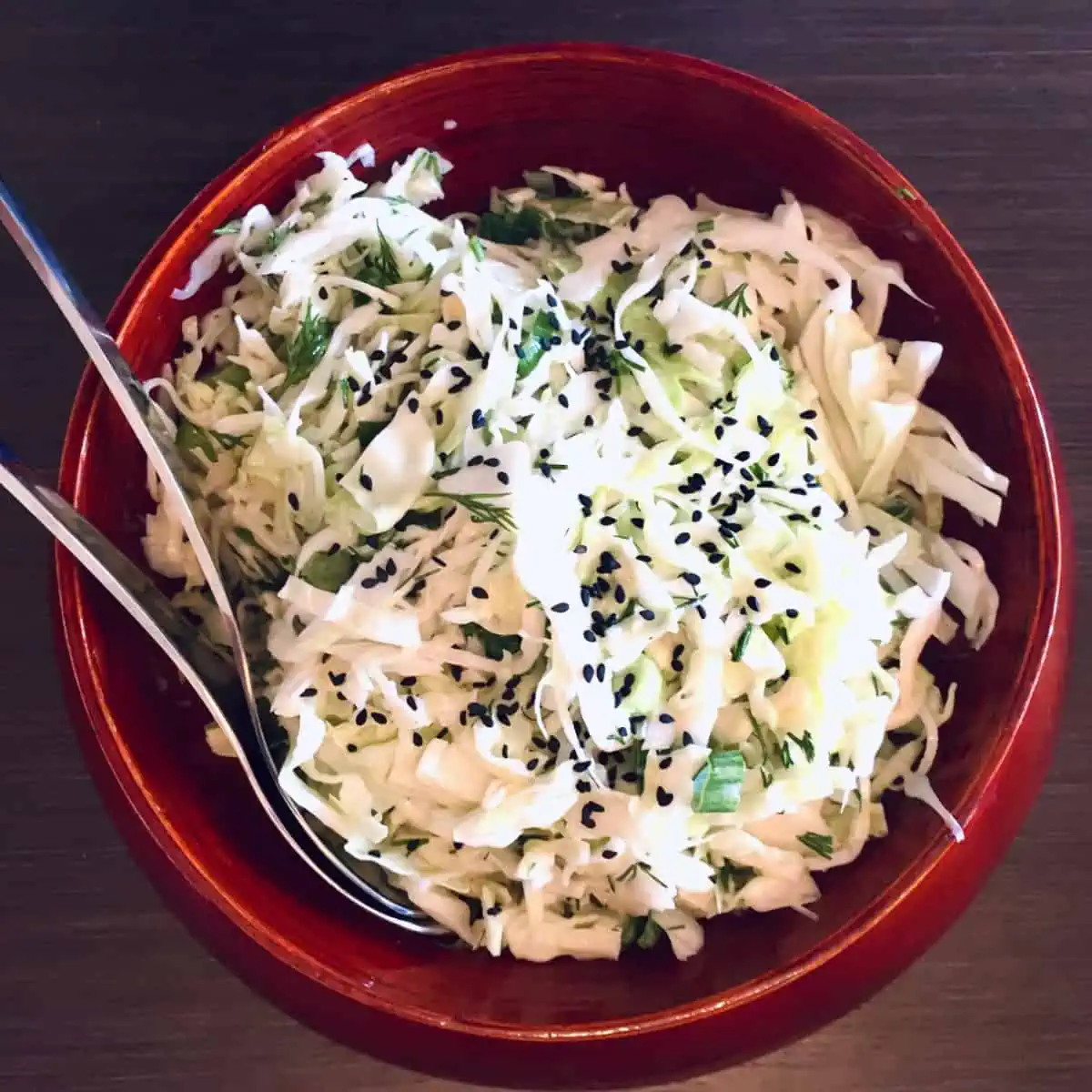
(instead of white cabbage)
4. Red Cabbage
Also known as purple cabbage, the high concentration of anthocyanins in red cabbage is what gives it its brilliant colour.

Appearance:
Flavour:
Selecting:
Nutrition:
Culinary Uses:
It has a tightly packed head and a vibrant purple hue that will add a beautiful pop of colour to your dishes.
It has a peppery taste becoming sweeter and softer once cooked. It is slightly milder tasting compared to green cabbage.
Pick dense, colorful heads with no soft spots or blemishes.
It is packed with antioxidants, particularly anthocyanins, carotenoids and phytonutrients. It has anti-inflammatory properties, attributed to the phytochemical sulforaphane.
Red cabbage retains its colour well during cooking, especially if you add some vinegar or lemon juice to the pot while you cook it. It is an excellent choice for roasting, braising, pickling, and using in slaws. It is also popular in many European dishes, such as German-style sweet and sour cabbage.
Try it in these salads...
5. January King Cabbage
A variety that is known for its hardiness and ability to withstand colder temperatures.

Appearance:
Selecting:
Flavour:
Nutrition:
Culinary Uses:
It has a round or slightly flattened shape with crinkled leaves that range in colour from blue-green to purple.
Choose round, heavy heads with crisp, blue-green leaves and no signs of wilting.
It has a sweet and earthy flavour.
Packed with nutrients such as vitamin C, vitamin K, and dietary fibre.
Iit is often used in cooked preparations, such as braising, roasting, or adding to soups.
Try it in these salads instead of red cabbage...
6. Pointed Cabbage
This variety of cabbage is available during the spring and early summer. It is also known as Hispi, Conehead, Sugarloaf or Sweetheart Cabbage.

Appearance:
Flavour:
Selecting:
Nutrition:
Culinary Uses:
It has a pointed head with pale green, tender leaves.
It has a delicate flavour and a tender texture.
Opt for elongated heads with vibrant green leaves and no wilting.
A nutrient powerhouse containing vitamins C and K, as well as dietary fibre and zinc.
It is commonly used in salads, slaws, stir-fries, and soups.
7. Nappa Cabbage
A beloved ingredient in Asian cuisine, and is also known as Chinese Cabbage or Wombok.

Appearance:
Flavour:
Selecting:
Nutrition:
Culinary Uses:
It has elongated, oblong-shaped leaves that are pale green and crinkled.
This variety has a more delicate and mild flavour compared to other cabbages, making it a favourite in Asian cuisines.
Select crisp, pale green heads with tightly packed leaves and no signs of wilting or browning.
Rich in essential nutrients like vitamin C, vitamin K, and folate.
It is widely used in stir-fries, soups, and kimchi, a traditional Korean fermented dish. Its crisp texture and slightly sweet taste also make it a fantastic addition to salads and spring rolls.
Try it in these salads...
8. Bok Choy/Pak Choy
Bok Choy and Pak Choy are also members of the Chinese cabbage family.

Appearance:
Flavour:
Selecting:
Nutrients:
Culinary Uses:
Pak Choy has light green leaves and stalks while Bok Choy has white stalks and darker green leaves. Prized for its crispness and mild, slightly peppery flavour.
Choose firm, crisp stems with vibrant green leaves. Avoid any signs of wilting or yellowing.
It is a rich source of vitamins A, C, and K, as well as important minerals like calcium and potassium.
Bok/pak choy is frequently used in stir-fries, soups, steamed dishes and raw in salads; its versatility allows it to be enjoyed both cooked and raw.
Try it in these salads...

9. Tuscan Cabbage
It is an Italian variety of kale and is also known as Cavolo Nero, Black Cabbage, Lacinato or Dinosaur Kale.
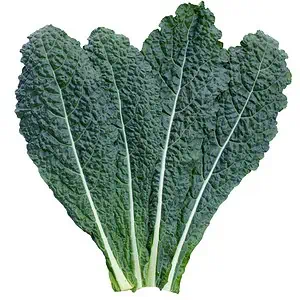
Appearance:
Flavour:
Selecting:
Nutrients:
Culinary Uses:
It has dark, bluish-green leaves that resemble the texture of dinosaur skin. It has a long and narrow shape with heavily wrinkled leaves.
It boasts a slightly sweeter and milder flavour compared to other cabbage varieties.
Look for dark green, crisp leaves without wilting or yellowing.
Packed with nutrients such as vitamins A, C, and K, along with fibre, calcium, and iron.
It is used in a variety of soups, stews, stir-fries, and salads. Its tender leaves hold up well during cooking and provide a delightful chewiness.
Try it in these salads instead of kale...
10. Brussels Sprouts
The name "Brussels sprouts" originated from the capital city of Belgium, Brussels, where they were widely cultivated in the 16th century.

Appearance:
Flavour:
Selecting:
Nutrients:
Culinary Uses:
They are small, compact cabbages that grow in clusters along a stalk.
They have a strong flavour and a slightly bitter taste.
Choose firm, compact sprouts with vibrant green colour and uniform size.
A nutrient-dense vegetable, providing significant amounts of vitamins C and K, dietary fibre, folate, and potassium.
Brussels sprouts are typically roasted, steamed, sautéed, or used in casseroles and salads.
Try it in these salads...
Common Questions
What is the most popular cabbage variety?
Ah, the age-old question! Green cabbage takes the crown for the most popular variety. It's versatile, crunchy, and just plain delicious. But hey, don't sleep on red cabbage – it's a close runner-up with its vibrant colour and slightly sweeter flavour!
What is the best way to store cabbage?
- So, you've got yourself a cabbage, huh? The best way to keep it fresh and crunchy is to store it in the fridge. Pop it in a plastic bag or wrap it in a damp paper towel to help retain moisture. Your cabbage will thank you later!
How do I prepare cabbage for salad?
- Start by giving your cabbage a good rinse under cold water. Then, slice or shred it into thin strips.
- You can use a knife, mandoline, or even your trusty food processor. And hey, don't forget to remove any tough outer leaves before you get started!
- Head over to our cabbage prep post for detailed instructions.
Can I substitute one cabbage variety for another in recipes?
Absolutely! While each cabbage variety brings its own unique flavour and texture to the table, you can totally mix and match in recipes. So go ahead, get creative, and let your taste buds be your guide!
Can I freeze cabbage for later use?
Freeze cabbage? You betcha! Just blanch it in boiling water for a couple of minutes, then dunk it in ice water to stop the cooking process.
Pat it dry, pop it in a freezer-safe bag, and voila – you've got yourself some frozen cabbage ready for action whenever you need it!







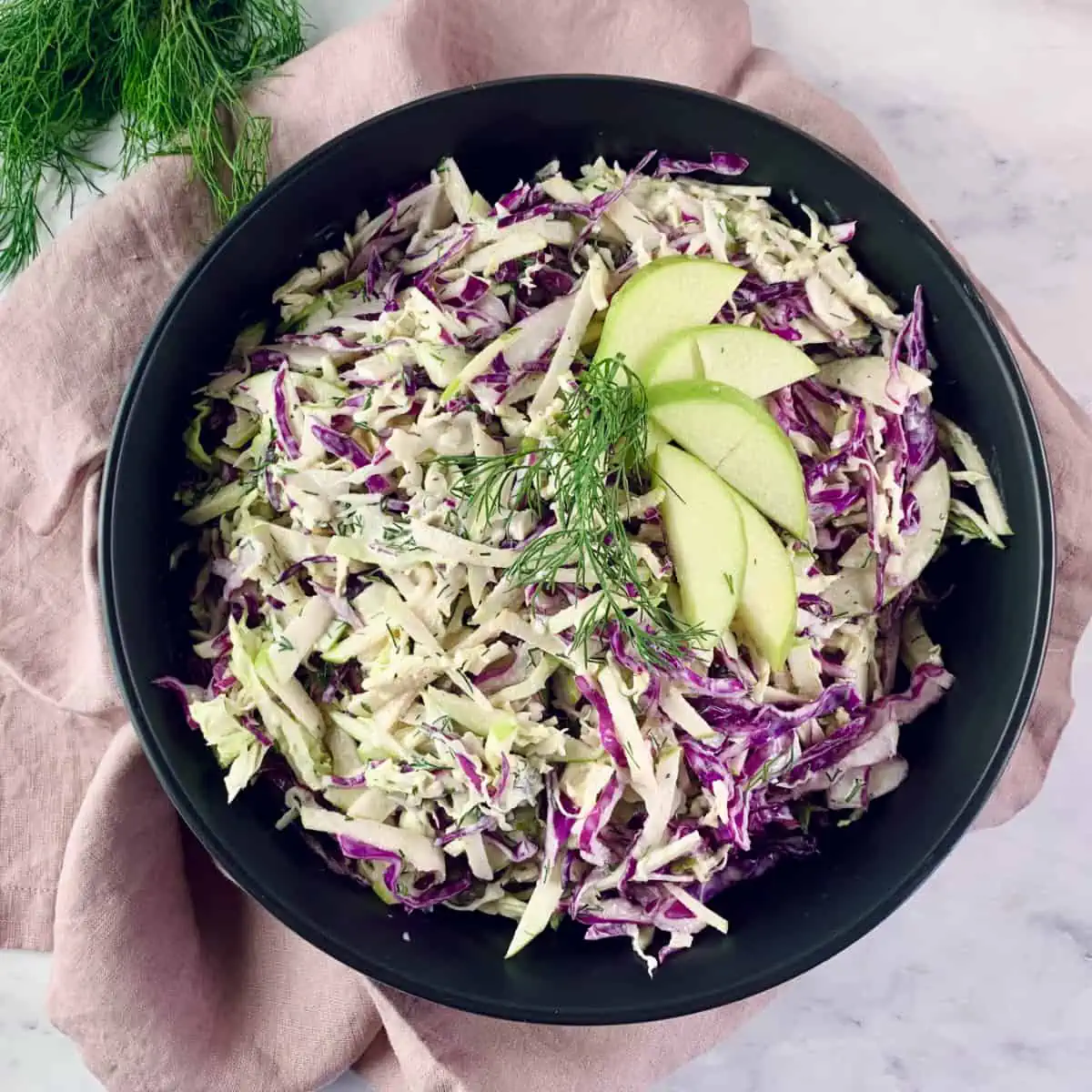







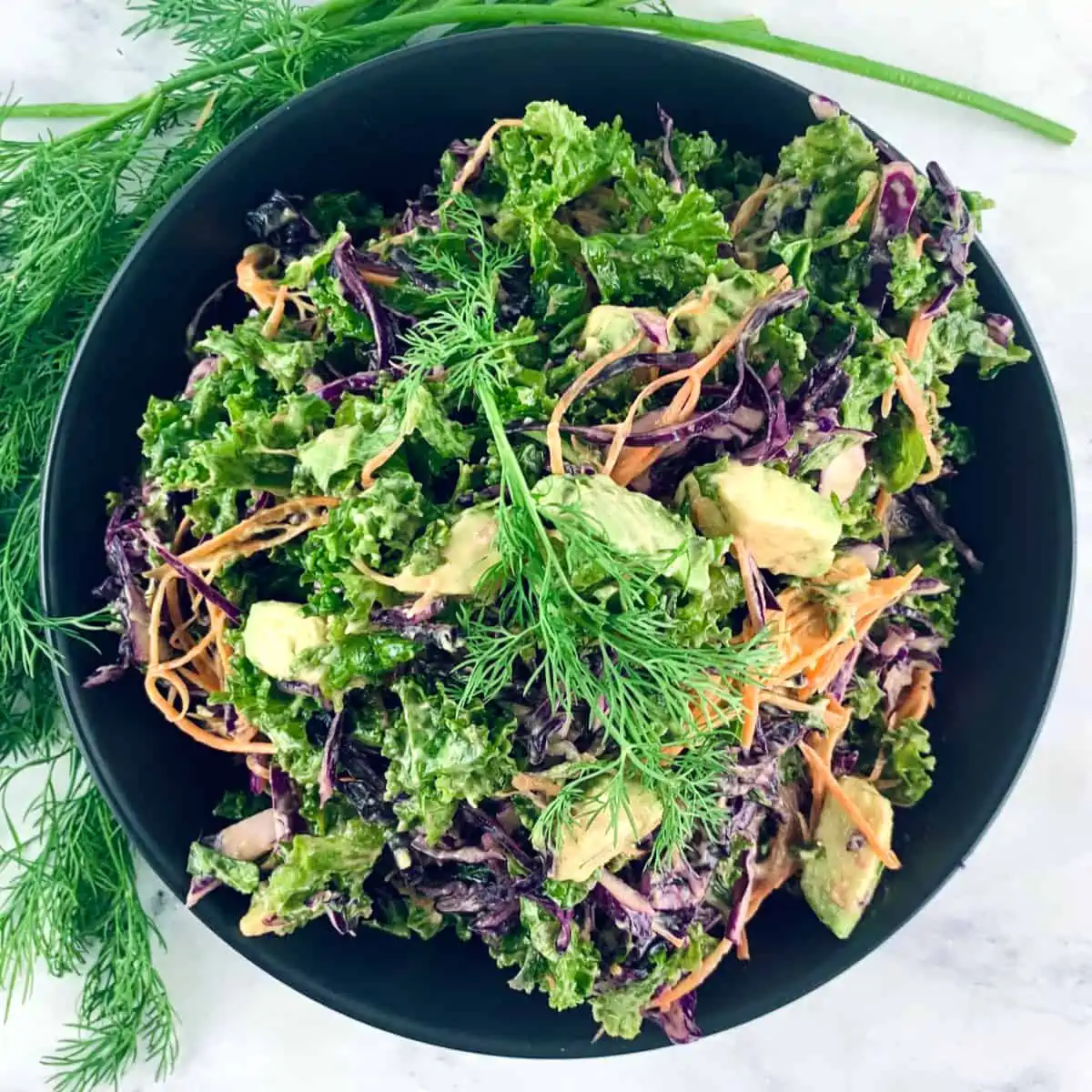
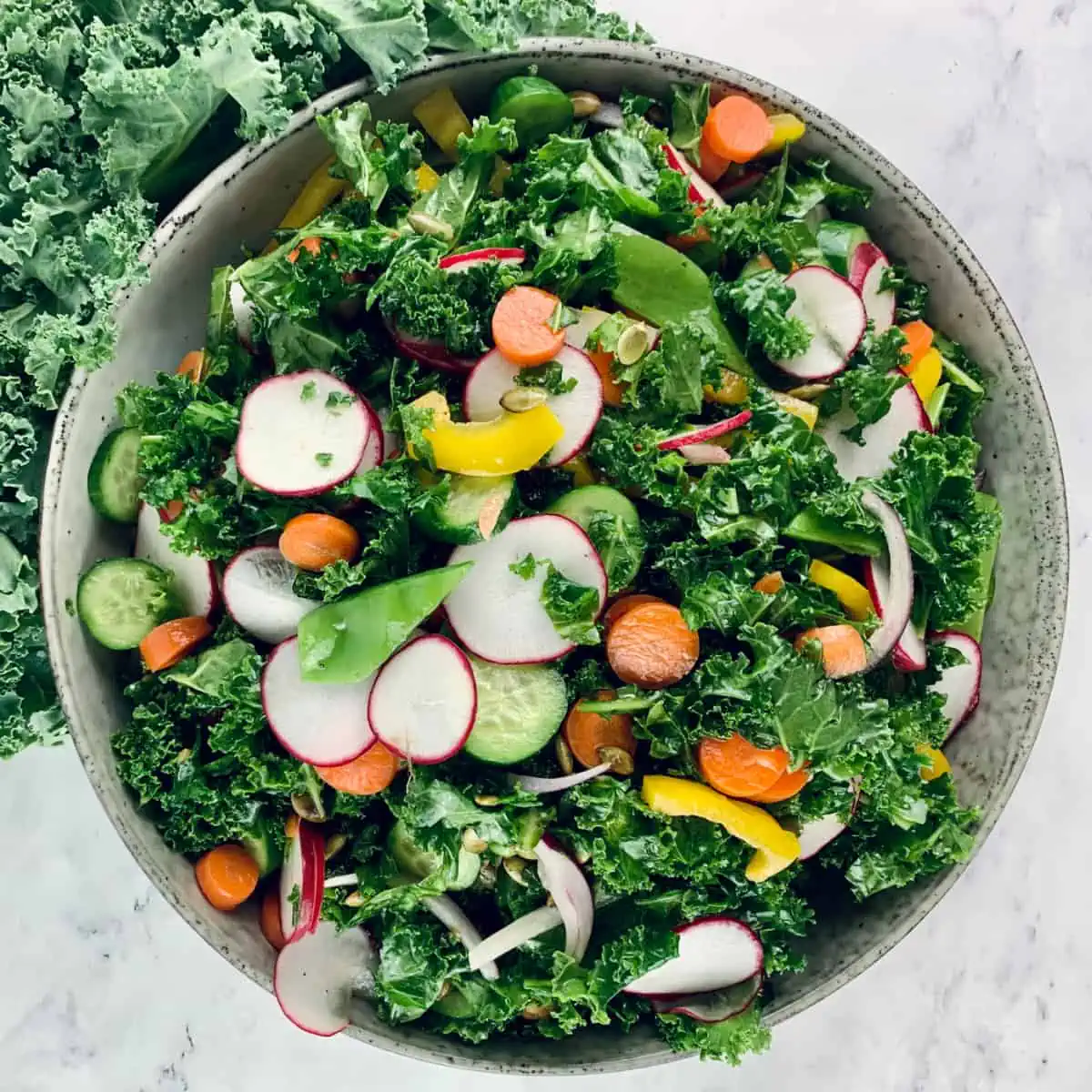




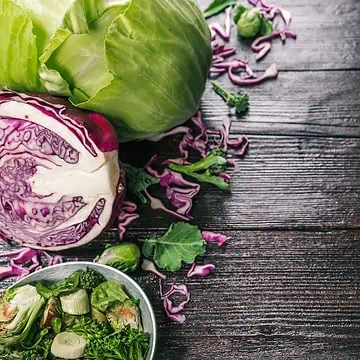



Leave a Reply